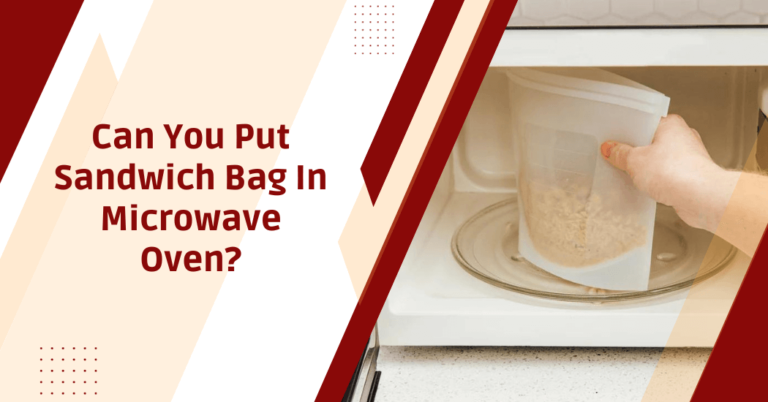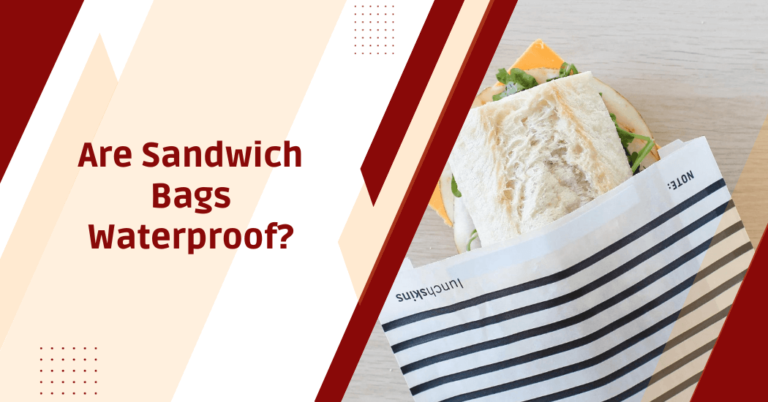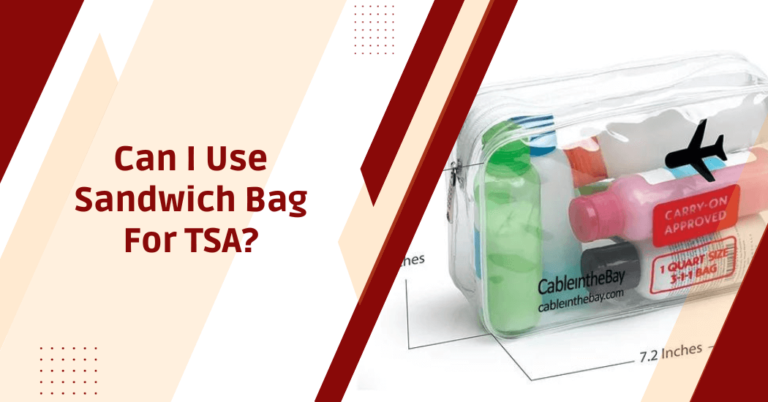Can you use sandwich bags for sous vide?
Sous vide is a popular cooking technique that involves sealing food in a bag and cooking it in a water bath at a precise temperature. This method guarantees perfectly cooked meals, with enhanced flavours and textures.
However, a common question raised among sous vide enthusiasts and home cooks alike is about the type of bags suitable for this culinary technique. Specifically, “Can you use sandwich bags for sous vide?” This question stems from the desire for convenience, cost-effectiveness and accessibility.
In this blog post, we aim to explore this question in detail, considering the safety and practicality of using sandwich bags in sous vide cooking.
Use Sandwich Bags For Sous Vide
Yes, you can use sandwich bags for sous vide cooking but it is important to ensure that they are made from polyethene, which is a safe plastic that doesn’t leach harmful chemicals into food at sous vide cooking temperatures. Many sandwich bags from well-known brands meet this requirement.
However, it’s essential to avoid using cheap, low-quality bags that might not be safe for cooking purposes. While sandwich bags can work in a pinch, they are not as reliable or durable as purpose-made sous vide bags or vacuum-sealed bags.
Always make sure to double-check the safety and heat resistance of any bag you intend to use for sous vide cooking.s
Pros and cons of using sandwich bags for sous vide
Pros of using sandwich bags for sous vide
- Cost-effective: Printed Sandwich bags are often more affordable than specialized sous vide bags, making them a cost-effective choice for those on a budget.
- Accessibility: They are readily available in most supermarkets, unlike sous vide bags which may require a special trip to a kitchen supply store or an online order.
Cons of using sandwich bags for sous vide
- Heat resistance: Sandwich bags may not withstand the high temperatures needed for sous vide cooking, potentially leading to melting or chemical leaching.
- Durability: They are often less durable than sous vide bags and are prone to punctures and tears, which can lead to water contamination in your food.
- Sealing: Sandwich bags lack vacuum sealing capability. This could affect the cooking process as air in the bag can cause uneven heating.
Tips for using sandwich bags for sous vide cooking
If you decide to use sandwich bags for sous vide cooking, considering the aforementioned caveats, here are some useful tips to help you mitigate potential risks:
- Double bagging: To avoid leaks, consider double bagging your food. This provides an extra layer of protection against punctures and tears.
- Avoid overfilling: Overfilling your bag can increase the likelihood of tears and leaks. It’s best to leave some room for expansion, especially when cooking foods that release gases.
- Secure the bag properly: Ensure that the sandwich bag is sealed properly. An improper seal can lead to water entering the bag and diluting the flavours of your food.
- Keep the temperature in check: Always monitor the temperature during cooking. Remember, sandwich bags are not designed for high heat, so try to keep the temperature at the lower end of the sous vide cooking range.
- Use trusted brands: Not all sandwich bags are created equal. Always opt for trusted, high-quality brands to ensure you’re cooking with a bag that’s less likely to melt or leach chemicals.
Remember, using sandwich bags for sous vide cooking should be a last resort. There are better, safer options available that are specifically designed for this cooking method.
If you do use sandwich bags, take precautions to ensure a safe and enjoyable cooking experience.
Also Read: Can I use a sandwich bag for TSA?
Alternatives to sandwich bags in sous vide cooking
If you don’t have access to purpose-made sous vide bags, there are a few alternative options that can work well for sous vide cooking.
- Vacuum sealer bags: These bags are specifically designed for vacuum sealing and are suitable for sous vide cooking. They provide a tight seal and can withstand high temperatures without melting or leaching chemicals into food.
- Ziplock freezer bags: While regular ziplock bags are not recommended for sous vide cooking due to their susceptibility to punctures and tears, freezer bags are a possible alternative. They tend to be thicker and more durable than sandwich bags, making them less likely to leak during the cooking process.
- Reusable silicone bags: These environmentally friendly options are made from food-grade silicone and can withstand high temperatures without any harmful effects. They are reusable, making them a more sustainable option for sous vide cooking.
Ultimately, while sandwich bags may seem like a convenient option for sous vide cooking, they come with significant drawbacks in terms of safety and practicality.
It’s always best to opt for purpose-made sous vide bags or one of the alternative options mentioned above to ensure a successful and safe cooking experience.
Safety concerns while using sandwich bags in sous vide cooking
When considering using sandwich bags for sous vide cooking, it’s essential to prioritize safety. While polyethene is generally considered a safe plastic for food use, there are still some potential risks to keep in mind.
- Chemical leaching: Sandwich bags may contain chemicals that can leach into food when exposed to high temperatures over extended periods. This could potentially be harmful, especially if the bag is made from low-quality materials.
- BPA content: Some sandwich bags may contain BPA (bisphenol A), which has been linked to health concerns such as hormonal imbalances and developmental issues in children.
- Heat resistance: Not all sandwich bags are designed to withstand high heat levels, making them unsuitable for sous vide cooking. Using bags that are not heat-resistant can lead to melting and potentially contaminate your food.
It’s crucial to research the safety standards of any bag you intend to use for sous vide cooking and opt for purpose-made or alternative options if possible. Prioritizing safety will ensure a worry-free and enjoyable sous vide cooking experience.
Wrap Up
While sandwich bags may seem like a convenient option for sous vide cooking, they come with significant drawbacks in terms of safety and practicality. It’s always best to prioritize safety by using purpose-made sous vide bags or alternative options such as vacuum sealer bags or reusable silicone bags.
If you do decide to use sandwich bags, take necessary precautions to avoid potential hazards and ensure a safe cooking experience. Remember, your health and well-being should always be the top priority when cooking, so choose your sous vide bags wisely.






